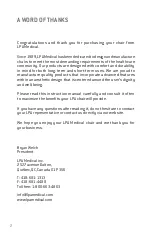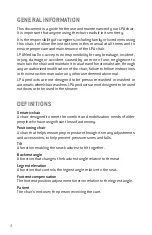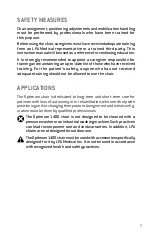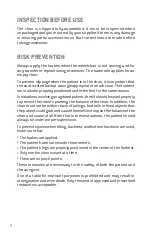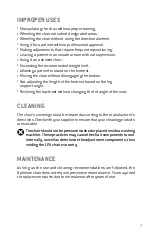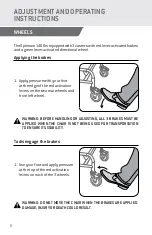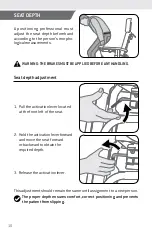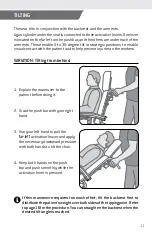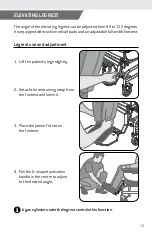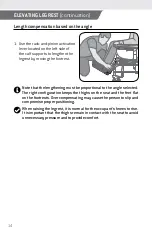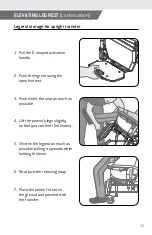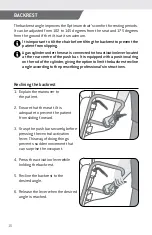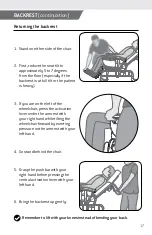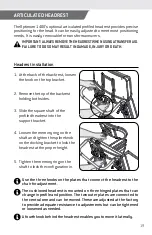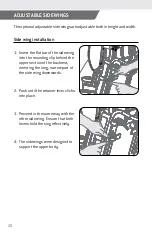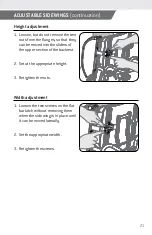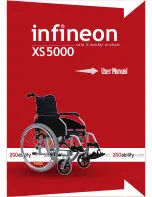
6
INSPECTION BEFORE USE
The chair is shipped fully-assembled. It must be inspected when
unpackaged and you must notify your supplier if there is any damage
or missing parts/accessories so that corrections are made before
taking possession.
RISK PREVENTION
Always apply the brakes when the wheelchair is not moving and for
any transfer or repositioning maneuver. The same rule applies for an
empty chair.
To prevent slippage when the patient is in the chair, it is important that
the seat is tilted back at an angle appropriate to each case. The footrest
must also be properly positioned under the feet for the same reason.
In situations involving an agitated patient, the tilt should be used properly
to prevent the risk of upsetting the balance of the chair. In addition, the
chair must not be within reach of railings, bed rails or fixed objects that
the patient could grab and cause themselves to upset the balance of the
chair and cause a fall. Note that in these situations, the patient should
always be under proper supervision.
To prevent injuries when tilting, backrest, and footrest functions are used,
make sure that:
•
The brakes are applied.
•
The patient’s arms are inside the armrests.
•
The patient’s legs are properly positioned in the center of the footrest.
•
Only one function is used at a time.
•
There are no pinch points.
These measures are necessary for the safety of both the patient and
the caregiver.
Use of a table for restraint purposes is prohibited and may result in
strangulation and even death. Only the used of approved and prescribed
restraints is acceptable.


